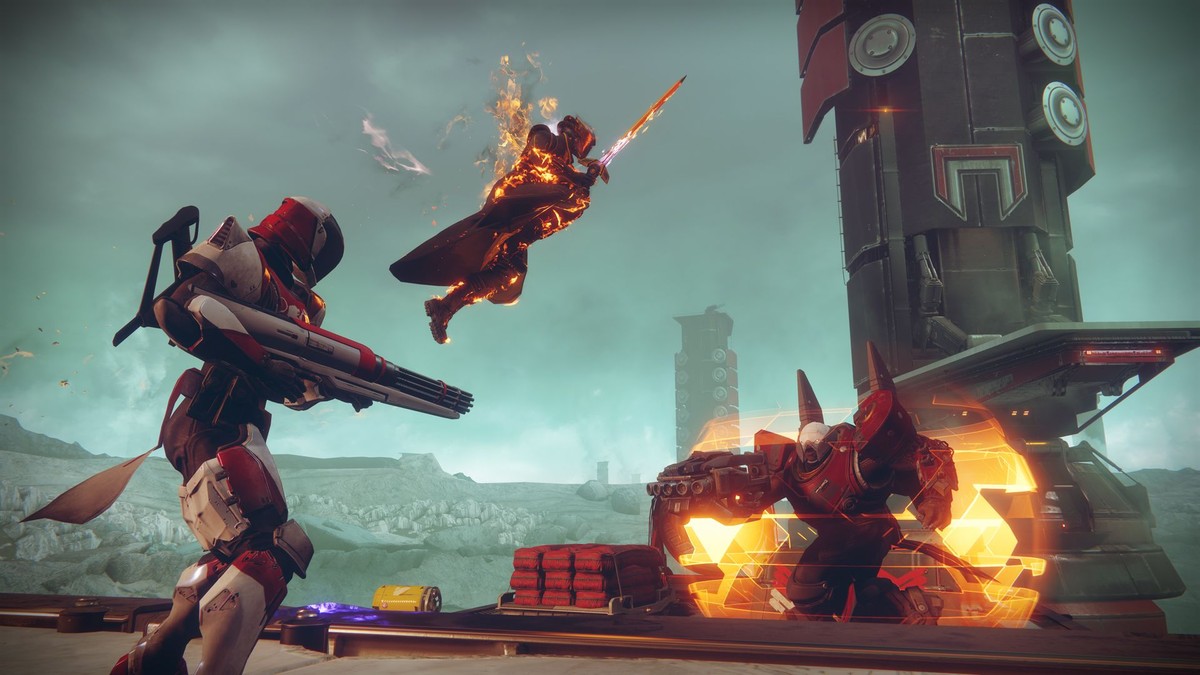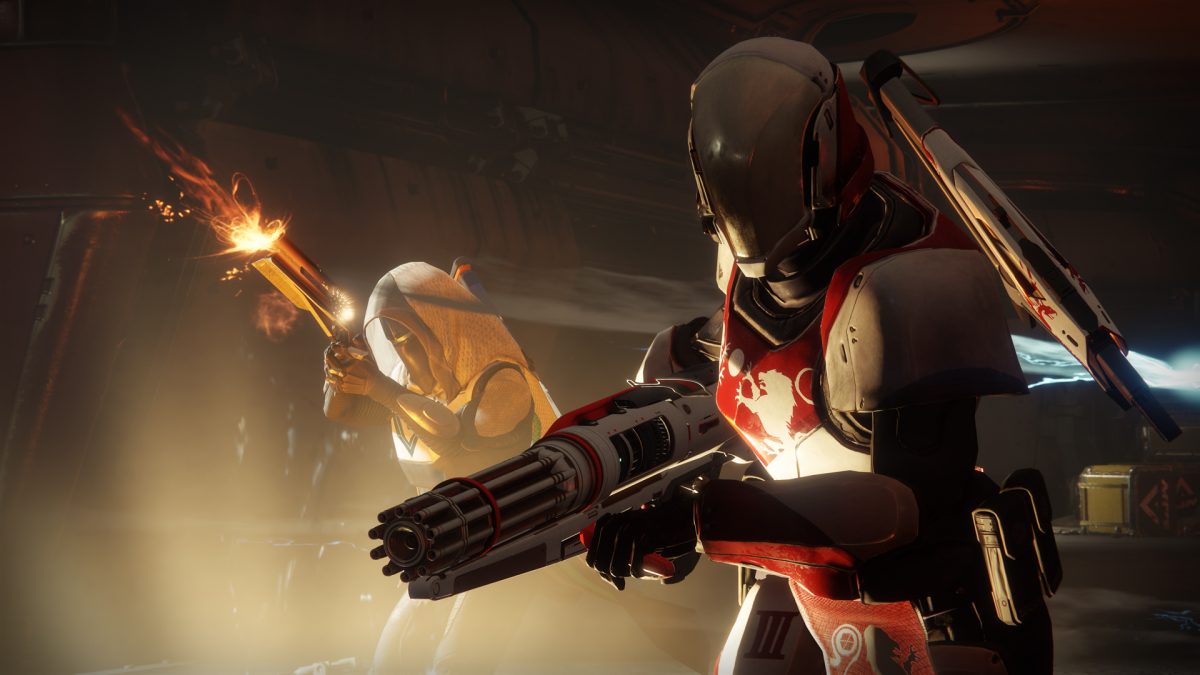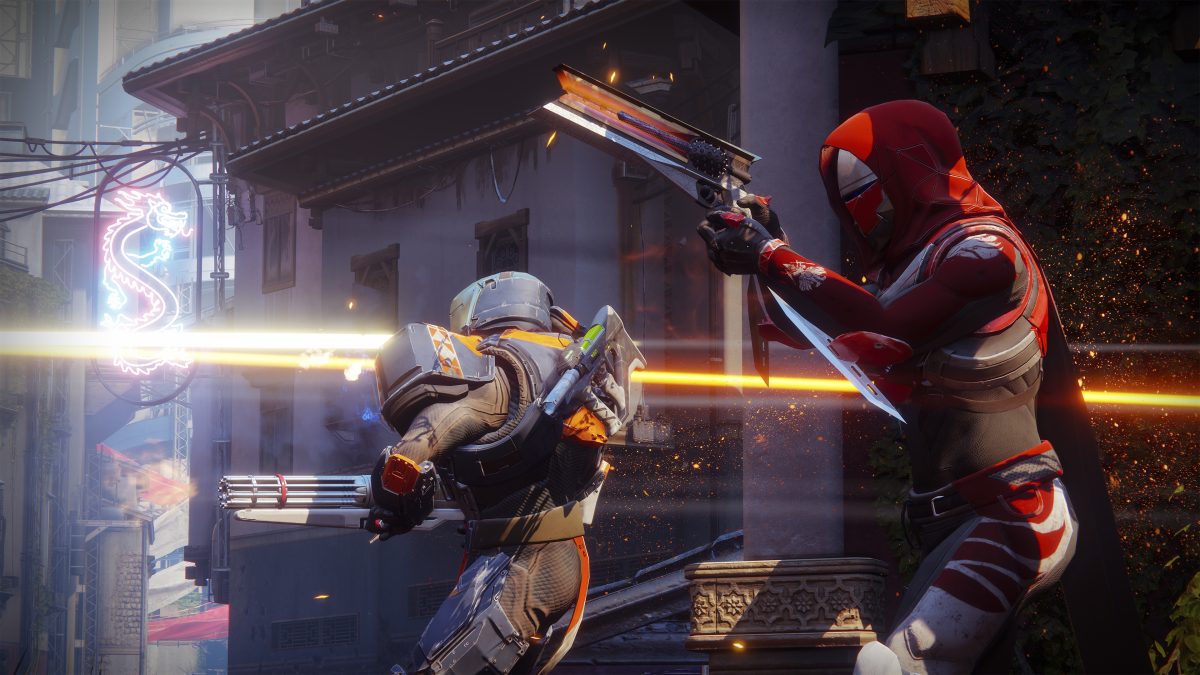When Bungie revealed Destiny 2 with an hour-long presentation detailing the game’s campaign, strikes and multiplayer offerings, I was more than a little intrigued. The studio was getting very ambitious again, and with E3 right around the corner, I couldn’t wait to get my hands on it and see how those different pillars were represented and how they melded together to make a complete game.
Unfortunately, the manner in which Destiny 2 was presented at the show had it split into three different demos at three different booths across the convention center, so my gameplay time was spent solely in the Crucible, the game’s competitive multiplayer mode.
In our play session we tried out the game’s new attack/defend mode dubbed “Countdown.” While new for the franchise, similar modes have existed in other multiplayer shooters for ages. Countdown has each team assuming either the attacker or defender role. The attacking team has to head to one of the map’s designated points and plant a bomb, if the bomb explodes, the round is declared a win. Defenders need to protect the bomb points and, should it be placed, defuse it before the time runs out. Additionally, since there is no respawn available for fallen players, wiping the opposing team also results in a win. Each win puts you closer to the goal of 6 rounds necessary to win the game.
 Countdown introduced several changes to the game’s UI which would be immediately noticeable to players who have spent any reasonable amount of time in the original game’s Crucible. Aside from the game-wide changes like having more player information and knowing if an opponent has a full super meter, there was also general UI improvements. In addition to a win counter and a round timer, the top of the screen now displays player status, how many revives are left available for each player. I can definitely see some complaining that it’s a bit too busy, but for the purpose it’s serving, I was more than happy with it.
Countdown introduced several changes to the game’s UI which would be immediately noticeable to players who have spent any reasonable amount of time in the original game’s Crucible. Aside from the game-wide changes like having more player information and knowing if an opponent has a full super meter, there was also general UI improvements. In addition to a win counter and a round timer, the top of the screen now displays player status, how many revives are left available for each player. I can definitely see some complaining that it’s a bit too busy, but for the purpose it’s serving, I was more than happy with it.
If it sounds a lot like Counter Strike or “Search & Destroy” in Call of Duty, you’re not wrong. However, that doesn’t necessarily make it a bad thing.
I played a lot of Destiny. Like, A LOT of Destiny. Last time I checked in I was clocked at well over 300 hours played, and a lot of that was in the Crucible. Much of the reason for that is because as a game it just played so damn good, and that’s the same case for Destiny 2. Player movement and shots fired have a sense of weight and purpose to them, and more often than not if I died, I knew it was my fault. It’s cliched, for sure, but Destiny’s gameplay definitely falls into the category of “if it ain’t broke, don’t fix it” for me, and I’m more than happy to accept more of the same in that regard.
 The demo only featured the new subclasses designed for Destiny 2, so while most of the original subclasses will return, we were limited to the Dawnblade (Warlock), Sentinel (Titan) and Arcstrider (Hunter).
The demo only featured the new subclasses designed for Destiny 2, so while most of the original subclasses will return, we were limited to the Dawnblade (Warlock), Sentinel (Titan) and Arcstrider (Hunter).
I was thrust into the Arcstrider role, and it plays much like the Bladedancer subclass from Destiny. Your mobility is identical, and the Arcstrider super devastates much in the same way, allowing me to wipe the opposing team twice as I sipped across the map mowing them down with my arc staff.
 It’s worth mentioning that the most notable rule change, switching to a 4v4 player count across all multiplayer modes as opposed to the original game’s 3v3 and 6v6 did feel odd and will take some getting used to. The maps definitely need to be designed with that specific player count in mind as to avoid the play zone feeling too big or too small. I will say, however, that in our session I never had an issue finding other players and my downtime was kept to an absolute minimum, so if the rest of the maps are made the same way, I’m optimistic.
It’s worth mentioning that the most notable rule change, switching to a 4v4 player count across all multiplayer modes as opposed to the original game’s 3v3 and 6v6 did feel odd and will take some getting used to. The maps definitely need to be designed with that specific player count in mind as to avoid the play zone feeling too big or too small. I will say, however, that in our session I never had an issue finding other players and my downtime was kept to an absolute minimum, so if the rest of the maps are made the same way, I’m optimistic.
We’ve still got several months before Destiny 2 goes live, but I can confidently say that as a seasoned Destiny player, the multiplayer didn’t disappoint at all and I am looking forward to playing more as that content drops.
Destiny 2 recently took home a SideQuesting Best of E3 2017 Award


No Comments